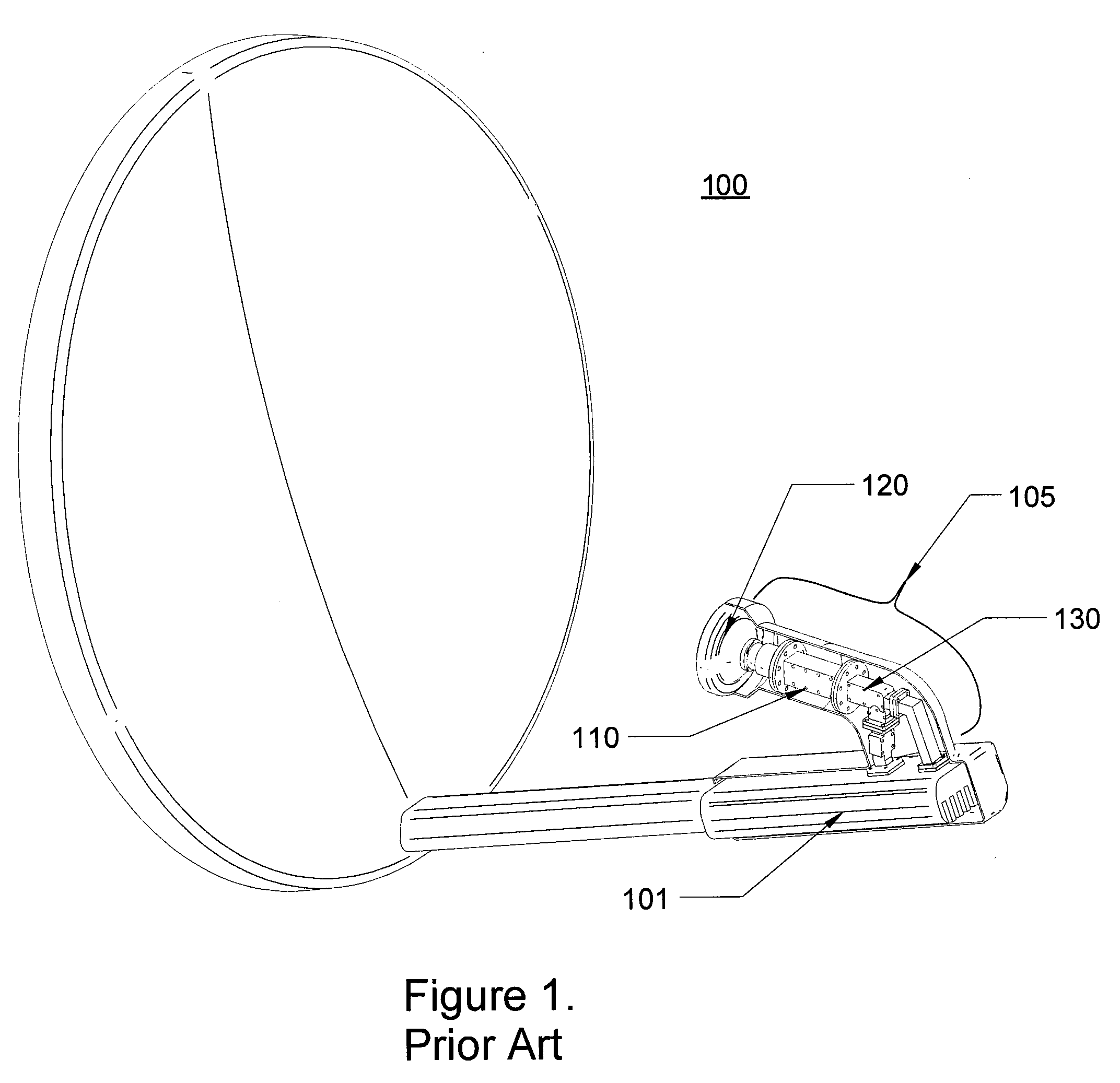Molded orthomode transducer
a transducer and orthomode technology, applied in waveguide horns, antennas, electrical devices, etc., can solve the problems of affecting the polarization performance of co-polarized, and presenting additional requirements for the feed system through dual-circular polarization
- Summary
- Abstract
- Description
- Claims
- Application Information
AI Technical Summary
Benefits of technology
Problems solved by technology
Method used
Image
Examples
second embodiment
[0040]Various embodiments of the integrated split block OMT are contemplated, including different divisions of the OMT portions between first OMT portion 215 and second OMT portion 225. In one exemplary embodiment and with reference to FIG. 2B, first OMT portion 215 is cast with all, or substantially all, of a relief of the OMT, and second OMT portion 225 is flat, or substantially flat. By flat, it should be understood that second OMT portion 225 primarily forms a lid for the waveguide, but contains little more of the waveguide structure. In a second embodiment and with reference to FIG. 2C, first OMT portion 215 is flat, or substantially flat, and second OMT portion 225 is cast with all, or substantially all, of a relief of the OMT. Moreover, the OMT may be divided between the first and second OMT portion 215, 225 using any ratio or percentage of division. In an exemplary embodiment, first and second OMT portions 215, 225 are divided to be substantially equal and take into consider...
first embodiment
[0072]The common port of the OMT supports low loss signal transmission for both the first and second band segments. In a first embodiment, the first band segment is in the K-band which is a frequency range of about 18.3 to 20.2 GHz, resulting in a bandwidth of approximately 1900 MHz. The second band segment is the Ka-band which is a frequency range of about 28.1 to 30.0 GHz, resulting in a bandwidth of approximately 1900 MHz. These operational band segments are alternatively known as operational passbands. Moreover, a dual-band device operating over these two exemplary frequency ranges is also known as a K / Ka-Band device.
[0073]In a second embodiment, the first band segment can be K-band and the second band segment is the Q-band which is a frequency range of about 43.5 to 45.5 GHz, typically for military communications. In this embodiment, the K-band may be a frequency range of about 20.2 to 21.2 GHz. Furthermore, in a third exemplary embodiment a first band segment may be K-band, a ...
PUM
 Login to View More
Login to View More Abstract
Description
Claims
Application Information
 Login to View More
Login to View More - R&D
- Intellectual Property
- Life Sciences
- Materials
- Tech Scout
- Unparalleled Data Quality
- Higher Quality Content
- 60% Fewer Hallucinations
Browse by: Latest US Patents, China's latest patents, Technical Efficacy Thesaurus, Application Domain, Technology Topic, Popular Technical Reports.
© 2025 PatSnap. All rights reserved.Legal|Privacy policy|Modern Slavery Act Transparency Statement|Sitemap|About US| Contact US: help@patsnap.com



